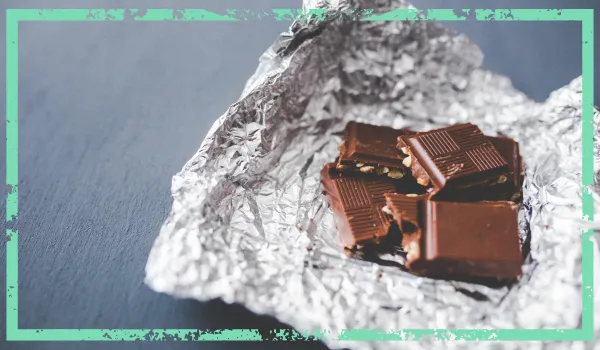Is Rubber Biodegradable?
Learn about the biodegradability of rubber and what happens to it when it goes into the environment.
It is an interesting question to consider – is rubber biodegradable? We see and use rubber products every day in a variety of household items and commercial products such as tires, seals, medical gloves, tires, and playground equipment. Our natural curiosity is peaked when considering if this common material is biodegradable.
In short, the answer is yes and no. Most recycled rubber materials are natural rubber as that is actually quite biodegradable. It is composed of naturally-occurring polymers which break down gradually in nature due to the action of microorganisms around them in landfills or compost heaps.
On the other hand, synthetic rubber won’t readily biodegrade because it has been chemically produced with a variety of materials that cannot be broken down by microbial action. This is an especially big issue with daily-use items made from synthetic rubbers that are frequently discarded like plastic shopping bags or water bottles; they place a heavy strain on our environment without ever breaking down.

Natural and Synthetic Rubber
Rubber is a versatile material that is used for a variety of things in everyday life. There are two types of rubber commonly available: synthetic and natural.
Get Your Hand on Your Eco-Friendly Living Starter Guide!
Synthetic rubber is specifically formulated to meet specific performance requirements, making it ideal for many applications, such as tires on cars and airplanes. Natural rubber, also known as “gum rubber,” is widely available and often more cost-effective.
It has been used by cultures around the world for centuries due to its softness, flexibility, and resilience. While synthetic rubber typically lasts longer than natural rubber, both have their pros and cons when compared against each other in terms of durability, strength, versatility, price, and environmental impact.
What Is Rubber Made Of?
Rubber is an astonishingly versatile material, famously used as tires for automobiles, erasers, and many other everyday items. But what is rubber actually made of? Rubber is composed entirely of polymers—long chemical chains made up of repeating units called monomers.
To make rubber, the most common type of polymer used is natural rubber latex, which comes from the milky sap of the rubber tree Hevea brasiliensis.
Natural latex rubber has unique properties that make it incredibly useful. It is highly elastic and can stretch to up to twice its size before returning to its original shape on release. Additionally, it has extraordinary tensile strength and good heat resistance; both qualities make it well-suited to a variety of applications.

Of course, there is synthetic rubber too. SBR (styrene-butadiene rubber) offers better heat resistance than natural rubber while Neoprene holds better in oil-based environments but otherwise performs similarly to natural latex. Both types are extremely useful materials and are employed in a wide variety of products in the rubber industry around the world today.
How To Opt For Sustainable Natural Rubber?
Sustainable natural rubber is an increasingly popular choice in the marketplace due to its environmental benefits. Annual production of natural rubber outpaces synthetic manufacturing and is a key component in many industries – from automotive production to health care equipment.
To ensure that your purchase of natural rubber is sustainable, it’s important to do a bit of research on the type of product you are looking to buy. Start by verifying if the company responsible for production uses renewable resources such as Hevea brasiliensis, a sustainable collection of rubber taps, and also monitor water usage associated with this process.
Additionally, seek out sustainably certified products that prioritize contaminant-free vegetation and adhere to manufacturing guidelines for safe harvesting. Above all else, find eco-friendly rubber solutions for post-production – from recycled packaging materials to the use of non-toxic dyes during packaging. Making smart purchase decisions can help shift current demand away from non-sustainable methods toward those that emphasize an environmentally friendly approach to natural rubber production.
More About Rubber Trees
The rubber tree (Hevea brasiliensis) has a fascinating history, with its sap first used by inhabitants of the Amazon rainforest centuries ago to make waterproof clothing and durable items. The wood from rubber trees is also in great demand as it is highly resistant to decay.
During the 19th century, this natural rubber was exported across the world, becoming an important trade commodity as its unique properties make it suitable for all kinds of applications.
Nowadays, these trees are not just farmed for their sap but also planted in urban areas, bringing shade and beauty to cities and towns. Their rich green leaves and decorative bark provide an aesthetic charm that is increasingly valued in modern times; they are even found growing in some public parks making them quite popular amongst city-dwellers and tourists alike.
What Makes A Material Biodegradable?
Biodegradable materials are a type of material that can be broken down and disappeared in the natural environment without causing major harm. This ability is due to the fact that these materials contain chemical compounds that can be metabolized by microorganisms, making them eligible for biodegradation.

The different types of molecules and polymers are usually composed of hydrophilic materials with oxygen, carbon, and hydrogen as the main elements. Biodegradable materials also break down easier when exposed to other agents such as light, heat, and enzymes.
Therefore, these environmentally friendly building blocks of biodegradability are those substances suitable for controlling pollution in modern society. In conclusion, biodegradable materials have a huge potential to benefit the environment due to their ease of breakdown in nature.
Conclusion: Is Rubber Biodegradable Or Not
While it may surprise many people, rubber is actually not biodegradable – the decomposition of natural rubber takes decades and is affected by environmental conditions. However, new synthetic rubber, made using chemicals such as benzene and ethylene, can be broken down by bacteria much like any other plastic.
And while this biodegradation time may still seem long in comparison to other materials such as paper or food waste, it’s much faster than natural rubber which could remain intact for centuries. Nevertheless, experts agree that the best way to reduce waste from rubber products is to make sure their lifespan is extended for as long as possible through increased durability.
The use of recycled rubber in households and industry-based products can also help decrease the amount of rubber waste that makes its way into landfills and oceans. Ultimately, when dealing with both natural and synthetic rubber, we should look first towards reusing and recycling rubber before seeking ways to speed up the biodegradation process.






